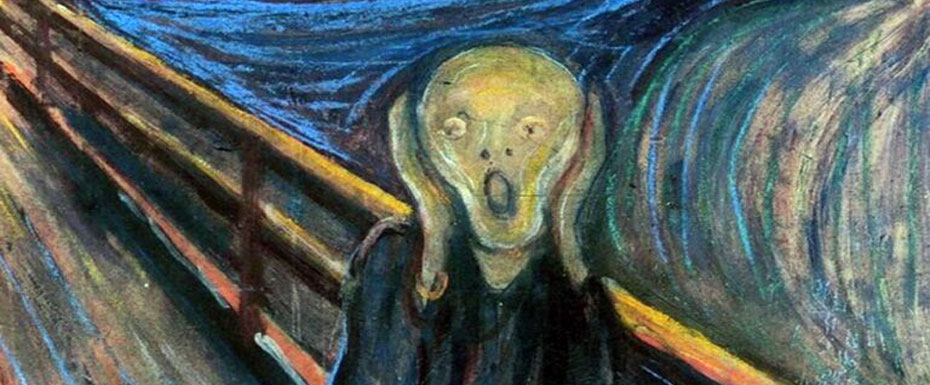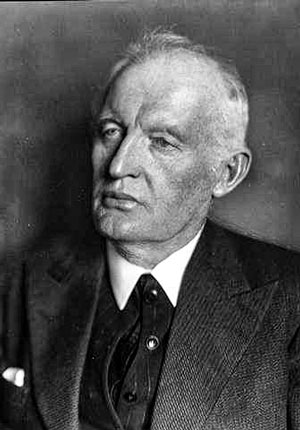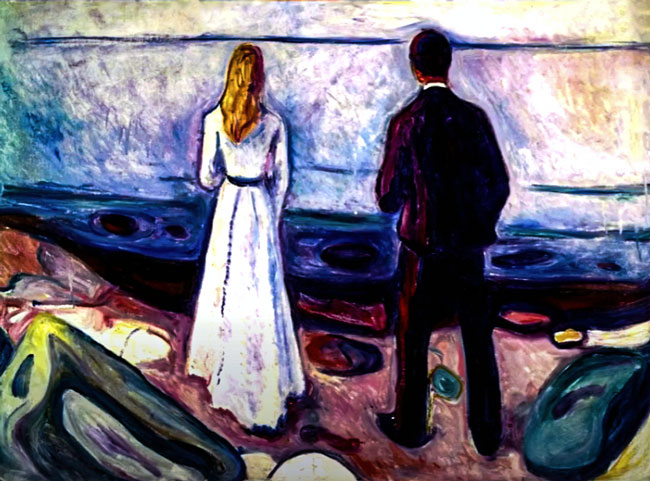
One of the brightest European artists, who won fame and recognition during his lifetime, Edvard Munch was never able to find the peace of mind he was striving for. Munch claimed that painting was the only thing that saved him from his own thoughts. Read on to learn about how childhood memories influenced his later life, what Munch expressed in his paintings, and why he was so popular during his lifetime.
Early Years
Norwegian artist Edvard Munch was born on December 12, 1863, into a poor but cultured family: their distant relative was Jacob Munch, a famous neoclassical artist and a student of the French painter Jacques-Louis David.
From an early age, Edvard was haunted by death, melancholy, and a sense of doom. When the boy was five years old, his mother died of tuberculosis. His father, Christian Munch, adopted religiosity bordering on fanaticism. The impressionable child suffered at night from nightmares because of the infernal sermons of Christian. To escape from obsessive images, the boy began to draw.
Artistic Path
In 1879, at the insistence of his father, Edvard entered a technical college, where he excelled at natural science. A year later, his passion for painting still prevailed: the young man decided to become an artist and entered the Royal School of Painting in Christiania.
The artist’s bohemian habits—friendship with young nihilists, passion for alcohol, frequent parties—irritated Father Munch and worsened the already strained relationship.

The first exhibited work of the painter was Study of a Head (1883). At the Autumn Exhibition of the same year, the young man presented Girl Kindling a Stove, written in a realistic style. The paintings did not attract much attention, but it was with them that Munch’s formation as a painter began. At the end of 1884, the artist received a scholarship and was able to visit the Paris Salon.
Criticism
At the Autumn Art Exhibition of 1886, Munch presented The Sick Girl. In this work, the artist depicted the painful image of his dying sister. A young girl with a sunken, pale face leans on a raised pillow. Next to her is a woman with her head bowed. It merges with the dark background of the painting, symbolizing the sorrow of the whole house. The figure of the girl stands out in this twilight as if she were a source of light.
Critics were outraged by the work of the 23-year-old. Munch was accused of lack of technique and unwillingness to develop. After a flurry of criticism, the artist locked in and followed more conservative directions. Thereafter, he painted a number of impressionist portraits and landscapes.
Rethinking Creativity
In the autumn of 1889, Munch went to Paris and began experimenting with styles. The artist devoted his free time not only to museums, excursions, and the study of classical art but also to drinking.
In Berlin, Munch met Albert Kohlmann, a wealthy art connoisseur. Their long conversations about the occult and human spirituality prompted the painter to create a series of canvases, which he considered his main creation.
Personal Life
The personality of the painter was complex, changeable, and ambiguous. Nervous and suspicious, but with an incredible desire for freedom and a keen sense of humor, Edvard easily fit into the circle of the creative bohemians of Oslo, Paris, and Berlin.
Edvard Munch was never married and had no children. The painter, suffering from paranoia, distrusted women in particular: “No matter how you treat them, they still ruin your life. Most of all, when you try to avoid them.” The reason may lie in the childhood of the artist. The entire female half of the family left him: mother and sister Sophia died, and the younger Laura was placed in a mental asylum.

Nervous Breakdown
Munch began to change his style in 1900. The works of this period were painted with sweeping, heavy strokes, exposing sharp forms and lighter colors.
The artist was enveloped in loneliness and doom, which he tried to drown out with alcohol. Munch plunged into depression, which he could not find the strength to fight.
In 1908, Edvard was placed in a psychiatric clinic in Copenhagen after several nervous breakdowns and managed to repel his madness for a while.
In 1916, the artist moved to Oslo, where he spent the rest of his life painting and housekeeping. Two years later, Munch fell ill with the Spanish flu and recovered, despite the fragility of his health.
In 1930, the artist practically went blind in his right eye after a vitreous hemorrhage. This did not make the artist give up painting. Large works had to be abandoned, but he continued to sketch. Sketches with distorted shapes reflected the artist’s perception of the world impeded by blindness.
Death took Edvard Munch on January 23, 1944. He died quietly in his bed from heart paralysis. The artist’s ashes are in the honorary grove of the Oslo Cathedral.
Epitaph
The personality of Edvard Munch is a collection of mental disorders combined with incredible vitality. The artist’s sincerity is reflected in his canvases. The style shows his vision of reality and the mind of a true expressionist. Painful childhood memories, depression, and complexity of character contributed to his unique pictorial style, which became a new trend in European art.





